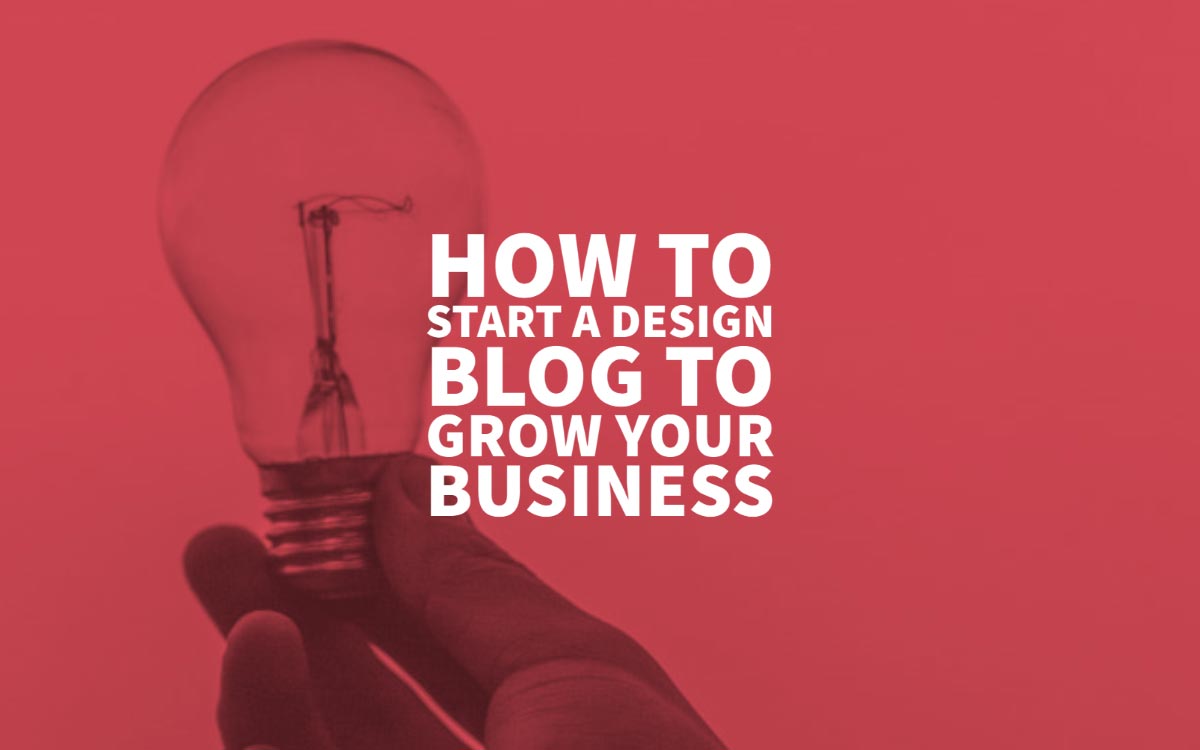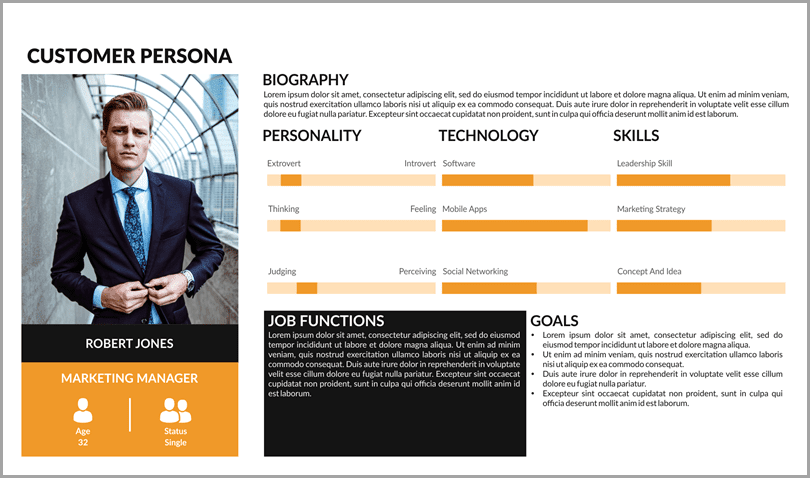
17 Aug How to Start a Design Blog to Grow Your Business
How to Start a Design Blog to Grow Your Business
If you’re a designer but don’t have a business blog, you’re missing out on a valuable opportunity to attract leads, connect with your audience, and grow your business.
You might think that content marketing is only for large companies with huge marketing budgets, but you’d be wrong. According to Hubspot, 70% of marketers are actively involved in content marketing as of this year, and blogs are one of the top three channels used.
But if you’ve never blogged before, you might be wondering how to get started. Read on and I’ll walk you through the steps to start reaping the benefits of blogging.
Understand your audience
Before you can blog successfully, you need to understand who you’re writing for and why. In other words, who is your audience? Since you plan to use your design blog to grow your business, we will assume that your target audience is your ideal customer.
If you’ve already created an ideal customer persona, return to it at this stage. If not, stop before you go any further and create one. The persona details who your ideal customer is, their interests and goals, and the problems you can help them solve. Here’s an example:


Source: Jeff Bullas
Once you understand your ideal customer and the core audience for your blog, you can start considering the kind of content that will appeal to that person. We’ll discuss content strategy more shortly.
Choose the perfect design blog name
Your blog’s title could simply be your name, of course. However, unless you have a very distinctive name, I recommend against this. Instead, choose a catchy, relevant, and memorable name that will resonate with your audience.
Yes, you can easily change the name of your blog later, you’ll just need to buy a new domain name (around $10). While the name you choose for your blog is important, it’s something you can always change in the future so don’t let this step hold you back. (ryrob.com)
Here are a few ways to arrive at the perfect blog name:
- Read books or articles in your niche – you might uncover a word or short phrase that would make a great name.
- Write down all the words and phrases related to your field that you can think of. One or two might jump out at you.
- Consider using alliteration (two or more words starting with the same letter). Alliterative names tend to be memorable. Hey, it worked for Coca-Cola and Dunkin’ Donuts!
- Come up with a pun that is relevant to your niche. A good example is the personal finance blog, “Good Financial Cents”.
- Use the X & Y formula. For example, designer Julieta Molina named her blog “Design and Tea”.
- Use a portmanteau, or a combination of two words. For example, Listverse combines the words “list” and “universe”.
- Use a generator such as Nameboy:
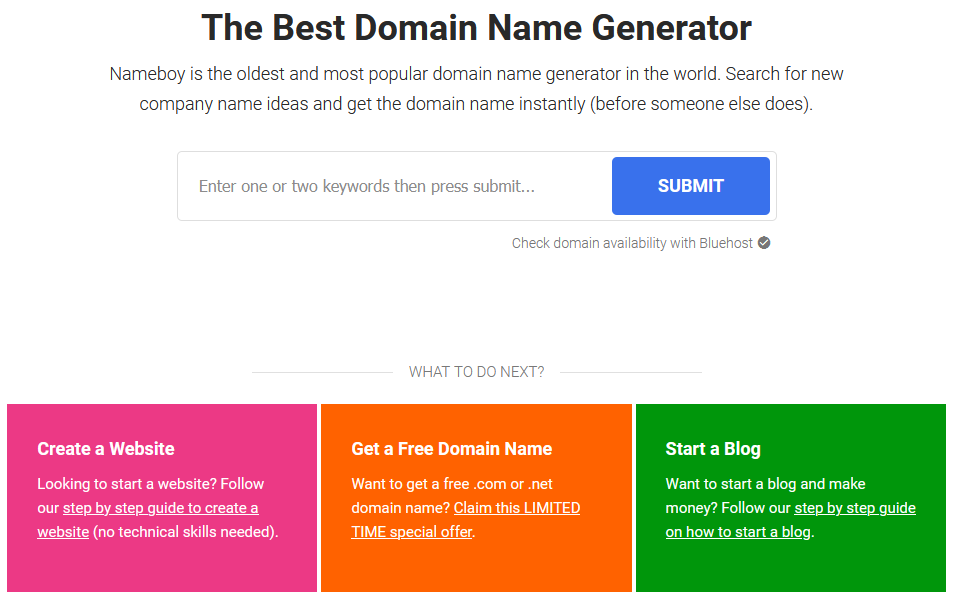
Purchase your domain
Once you’ve chosen your blog’s name, you can purchase a domain and hosting package. If you already have a professional website, you may wish to set up your blog using a subdomain (e.g. awesomedesignblog.bobsmith.com).
Unless you’re either a web design expert or planning to hire one, you’ll want to use an intuitive site builder and content management system (CMS) that does not require coding knowledge. You could use an all-in-one provider such as Squarespace, or use one of the many hosting providers that support WordPress integration.
An extra pro tip: don’t be tempted by a free domain (e.g. awesomedesignblog.wordpress.com). Instead, pay for your own domain (e.g. awesomedesignblog.com). There are two reasons for this: firstly, it looks more professional. Secondly, you can’t monetize your blog on a free hosting service – if you try to and you get caught, they’ll shut you down.
Make your blog visually appealing
You’re a designer, so use your blog as a canvas to show off your skills! Choose a suitable theme and an attractive color scheme, and create an eye-catching logo design or banner for your blog.
Here are some other important elements of making your blog visually attractive:
- Use plenty of images.
- Use short paragraphs and avoid any large blocks of text.
- Use plenty of white space.
- Make use of your sidebar to add widgets, banner ads, and
Visually unappealing content is one of the main culprits when it comes to a high bounce rate. This is particularly important when you’re in the design business. If your own blog is aesthetically off-putting, your prospective clients won’t trust your abilities! Think of your blog as your online storefront, and your design skills as the product.
Post regularly
One of the first questions people ask about business blogging is, “how often should I blog?” The answer is: it depends! There is no magic number and how often you blog depends on factors including your blogging goals, how much time you have, and how quickly you want to see results.
Hubspot found that smaller blogs should post 3-4 times per week to maximize organic traffic, and 1-2 times per week to increase brand awareness:
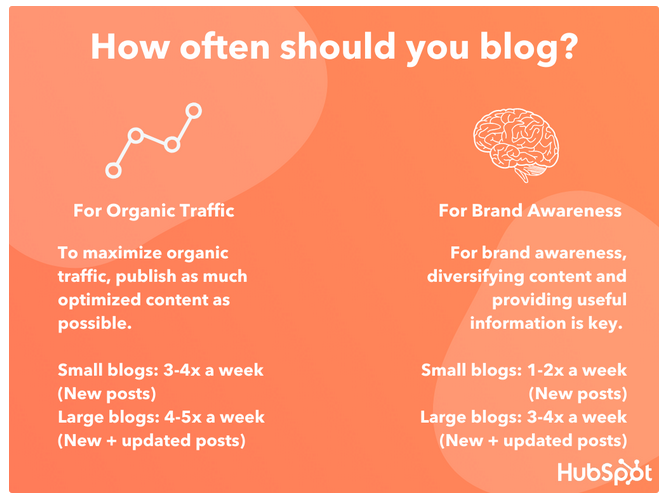
Whatever frequency you decide on, keep to a regular blogging schedule. For example, I always release new content on my blog on Wednesdays and Fridays. Timing matters, so figure out what works for your audience and stick to it. Remember that you can write your content and schedule it in advance.
Ultimately, quality is more important than quantity. More high-quality content will yield better and quicker results, but one great post per week is better than three pieces of poor quality content.
Build a content strategy
When it comes to your content strategy, we must return to the customer persona you created at the beginning. If you want to build a loyal following and have the best chance of turning your blog visitors into clients, you need to post the kind of content your audience wants. In other words, make sure you’re providing value.
But how do you find out what your readers want?
Keyword research
One of the best ways to see what your ideal customers want is to check out what they’re searching for on Google. Here’s an easy way to do it:
Start by brainstorming keywords and phrases that people might search to get to content like yours. Examples might be, “graphic design,” “design blog,” “how to become a designer,” and so on.
Next, download the Keywords Everywhere plugin. Keywords Everywhere is a fantastic tool that shows you related keywords for your search terms. It starts from just $10 for 100,000 searches.
Enter your generic search terms into Google. Under the search bar, you’ll see an estimated monthly search volume for that term:

Next, scroll down and check out the “related keywords” and “people also search for” sections. These will give you valuable insight into what topics in your niche are popular:
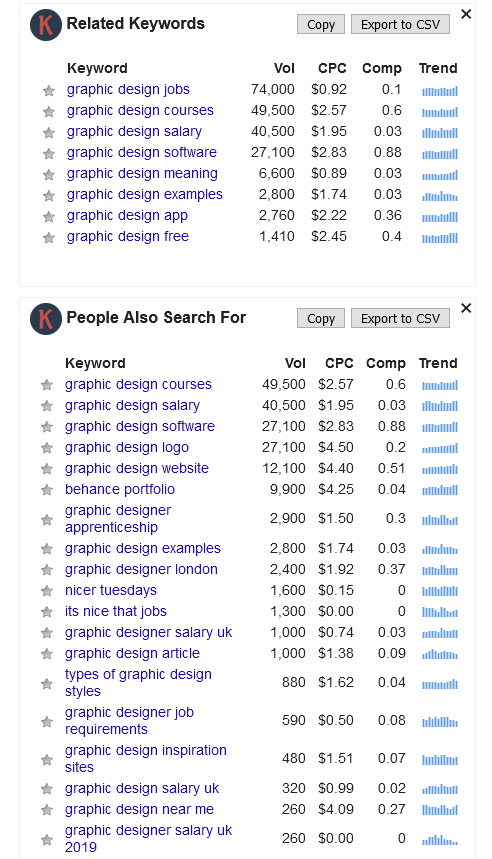
The best keywords to aim for are those that are considered “high-volume, low competition.” In other words, a lot of people are searching for them, but few sites are trying to rank for them. The competition score (“comp” in the above screenshot) is a number from 0 to 1. The lower the number, the lower the competition. From the above example, “graphic design salary” is a high-volume, low-competition keyphrase.
Check out the competition
What are the most popular blogs in your niche writing about? Do a Google search for the relevant keywords and check out the top few results. The goal here is not to copy your competitors, of course, but to draw inspiration and ideas from their success.
Many new bloggers make the mistake of thinking everything they write has to be a completely original idea. It doesn’t! In fact, there are few entirely new ideas left. Instead, feel free to pick up on trends and popular topics, and add your own spin to them.
The topic itself might not be original, but no-one else can give your unique take on it!
If you have active social media channels for your business, which of your posts get the most engagement? If you look closely at your social media analytics, chances are you’ll start to see patterns emerging.
Many of the same people who follow you on social media will be the ones who will want to read your blog. Therefore, paying attention to what resonates with them will give you a headstart as you develop your blog content strategy.
You can also solicit audience input via your social media channels. For example, imagine you’re creating a blog aimed at new designers looking to break into the profession. You might ask your followers, “what do you wish you’d known about the design industry when you were getting started?” By asking your audience for their opinions, experiences, and pain points, you give them the opportunity to tell you what content would be most beneficial.
Run a survey
If you have an email marketing list and social media presence, you can ask your existing audience what content they’d like to see. Create a short survey using a tool like Surveymonkey or Google Forms, and ask your subscribers and followers what content they’d find most valuable.
Here’s a bonus tip: to get a higher response rate, offer an incentive such as a piece of free content or entry into a prize draw.
Look at your analytics
What search terms are people most commonly using to find your site or blog? Use Google Search Console to check out the terms that are bringing your site
This strategy will not be feasible immediately if you’ve only just launched your site or blog, but it is useful when you’ve been going for a while and are looking to grow your content strategy.
Vary your content
By changing up the style and format of your content, you keep your blog interesting and engage different groups of readers. Therefore, vary the types of content you post. Here are just some formats you should consider:
- Listicles. A portmanteau of “list” and “article,” a listicle is a piece of content presented in the form of a list. They’re tremendously popular with marketers and readers alike.
- How-tos and tutorials.
- Infographics.
- Industry news, views, and round-ups.
- Opinion pieces and personal essays.
- Case studies.
- Product or service reviews.
- New product launches.
Not all types of content will be appropriate for all blogs. But you should aim to use at least a few of the above on a regular basis.
Include a CTA and direct to a landing page
A call to action (CTA) is where you tell your readers what you want them to do. You should regularly include CTAs in your blog posts if you want to use your blog to gain new leads and clients.
There are several ways to include a CTA on your blog. You might place it at the top of the page, at the end of a piece of content, in the sidebar, or utilize a pop-up.
Wherever you place them, your CTAs should link to a landing page. To increase your click through rate and conversions, consider offering a special deal or bonus for your readers. This is called a lead magnet. For example, if you want your blog readers to sign up to your email marketing list, you might offer them a free report or ebook in exchange for their email address. Or if you want prospective clients to get in touch with you, you could offer a free 30-minute consultation.
Here’s an example of a landing page:
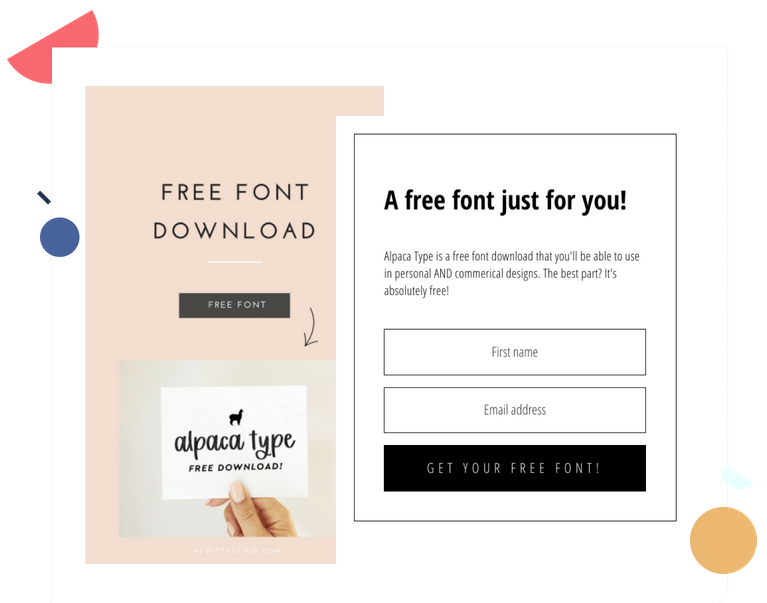

Source: ConvertKit
You can use a landing page builder to set up your page.
Promote your design blog
Once you’ve got your design blog up and running, you need to promote it. SEO will play a key role here (more on that in a minute), but there are other things you can do as well.
Use these strategies to promote your blog:
- Share new blog content with your email list or e-newsletter subscribers.
- Post blog content on social media.
- Repurpose blog content into video format and share it on your Youtube channel.
- Invest in PPC advertising.
- Invest in paid social media ads.
- Share content on social bookmarking sites such as Reddit and Digg.
- Join reciprocal sharing platforms such as Viral Content Bee. On these platforms, you gain credits for sharing others’ work, which you can then use to promote your own.
Whatever methods you choose, blog promotion takes time. Unless you have an enormous email list and social media following already, you cannot expect overnight blog success. Give it time and keep putting the effort in.
Focus on SEO
Search Engine Optimization is the cornerstone of success for any online business or digital marketing endeavour. SEO helps your content to show up higher in results on search engines like Google. Given that the top 3 results of any Google search take 75.1% of all clicks on average, the importance of SEO cannot be underestimated.
By sticking to white hat SEO techniques, you avoid the risk of incurring Google penalties. Here are a few you can implement:
Guest posting
Backlinks are essential for improving your SEO, and one of the best ways to build them is to contribute guest posts to other websites. Seek out relevant sites in your niche with a Domain Rating of 50+ and traffic of 3000+ visitors per month, then approach the editor and ask if you can write a guest post.
Once they have agreed, all you have to do is deliver an amazing piece of content. In return, you’ll get a link back to your blog from an authoritative source.
Sponsored posts that promote a specific product or service are a great way to earn reliable income from your blog. (wix.com)
Focus on keywords (without stuffing)
Each piece of content should be optimized for a specific keyword or phrase, and you should focus on that keyword as you write. However, there can be too much of a good thing, and including the word or phrase too many times is considered “keyword stuffing”. Keyword stuffing not only leads to poor-quality content, it can also have a negative impact on your SEO.
Here’s an example of what not to do:
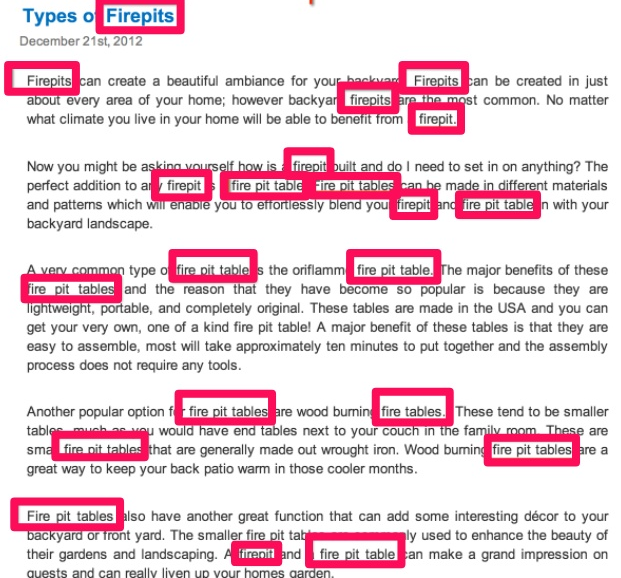

Source: Neil Patel
As a rule of thumb, aim to include your keyphrase 3-5 times in a blog post. And don’t forget to include it in full in the title, and in at least one of your H2 or H3 headers.
Alt tags are snippets of text attached to images that describe what the image contains. They serve two purposes: they improve accessibility for blind or partially-sighted users who browse with screen readers, and they help Google and other search engines establish what the image’s purpose is. You can add them directly to your image via your CMS.
Here’s an example:
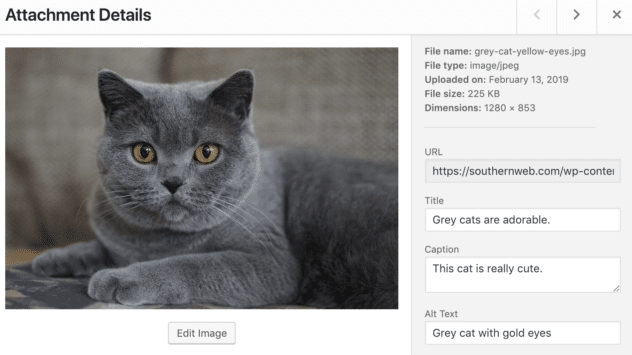

Source: Southern Web
Be as specific as you can, but keep your alt tags to under 125 characters.
Optimize your user experience
Over the years, Google’s algorithm has changed to prioritize user-friendly results. That means that your user experience (UX) is essential to good SEO results. Factors like your bounce rate, average length of a site visit, percentage of returning visitors, and ease of site navigation all play a role.
Focus on these factors to improve your UX:
- Page speed. Users expect a website to load quickly every time. Therefore, optimizing your page speed will vastly improve your search results rankings.
- Mobile friendliness. Since mobile devices now account for around 50% of global web traffic, you cannot afford to have a website that isn’t mobile-friendly. Investing in responsive design that is suitable for multiple user interfaces is a smart choice.
- Most pieces of content should be over 600 words long.
- Navigability. Simplify your site’s layout to ensure it is easy for users to navigate. If they can’t find what they’re looking for, they will get frustrated and give up.
Monetize your blog
Congratulations! You’ve created a beautiful blog which offers regular, relevant content to your audience, you’ve promoted it, and you’ve invested in SEO to improve your search engine ranking. What next?
At this point, it’s time to consider monetizing your blog. Since it is an extension of your business, it makes sense to use it as a source of income as well as a means of attracting clients.
There are two primary ways to monetize a blog:
Affiliate marketing
In affiliate marketing, you (the affiliate) join a program run by a provider or ecommerce store (the merchant). You then share that company’s products or services using a special unique link, and make a commission each time anyone makes a purchase through your link.
Affiliate marketing is heavily traffic dependent, as only a small percentage of people will click your links, and an even smaller number will buy. However, once you have a significant audience, it can be lucrative.
The products or services you advertise should be relevant to your niche and of interest to your audience. As a design blogger, you might choose to advertise things like website themes, design assets, printing services, or technology and software solutions for designers.
To get started, join an affiliate network and choose 2-5 merchants to promote.
An affiliate program is a commission-based way to advertise. When one of your readers clicks on a link on your blog, they get sent to an advertiser’s site and you earn a commission if they purchase. Affiliate links are a great way to earn income through the use of product reviews. However, you must remember to disclose your affiliation. (theblogstarter.com)
Display advertising
Google Ads is by far the biggest player in the display advertising field. Once your website is set up, you can join for free and start displaying ads on your website. Here’s an example of a display ad I saw this week:
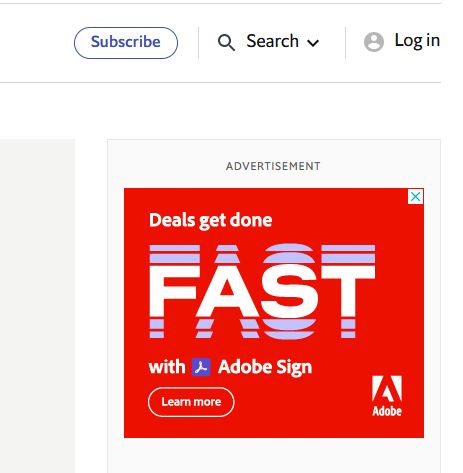
You’ll make money each time a site visitor clicks on one of those ads. And since everything gets handled through the advertising network (in this case, Google), it’s super simple and you don’t have to liaise with advertisers directly.
Growing your business through your design blog
As you’ve seen, blogging is a great way to take your design business to the next level. If you put in the time and effort to do it right, you can drive traffic to your website, grow your marketing list, bring new conversions into your sales funnel, and gain a loyal following. Once you’ve built up your blog’s audience, you can even monetize it for an additional source of passive income.
So what are you waiting for? If you haven’t launched your design blog yet, get started today!
Author Bio: Jess Amy Dixon is a Project Manager at Launch Space, where she helps SaaS clients land guest posts so they can generate links that push their content up the search rankings. She lives in the UK and when she’s not writing you can probably find her knitting, reading, or sipping coffee. Follow her on Twitter and Instagram @JessAmyWrites.
Last update on 2020-08-18 / Affiliate links / Images from Amazon Product Advertising API
